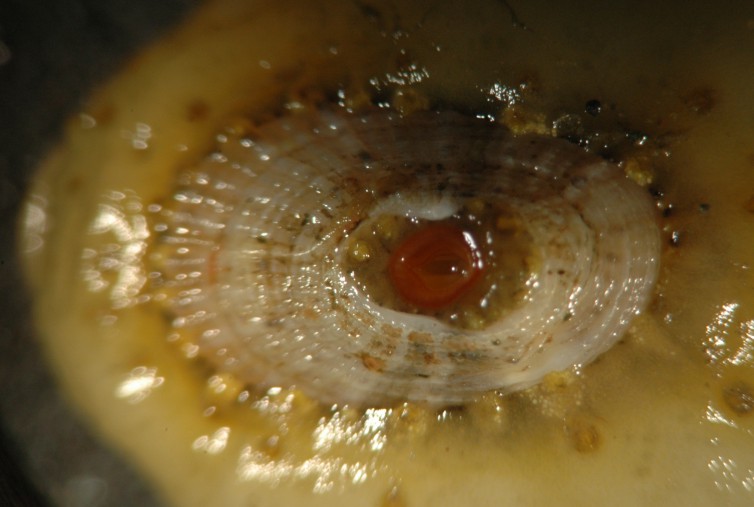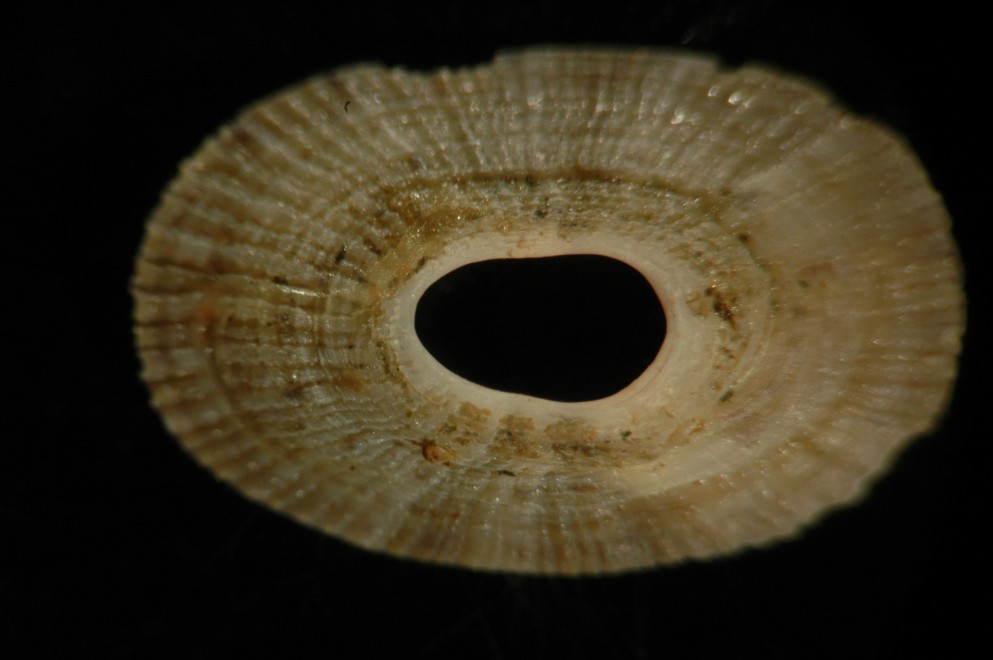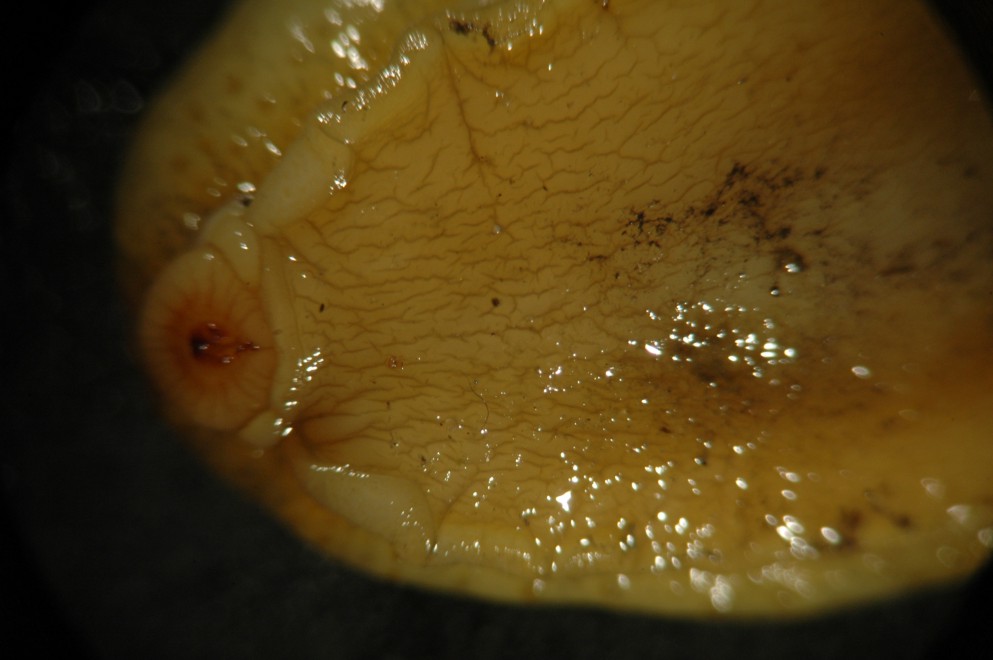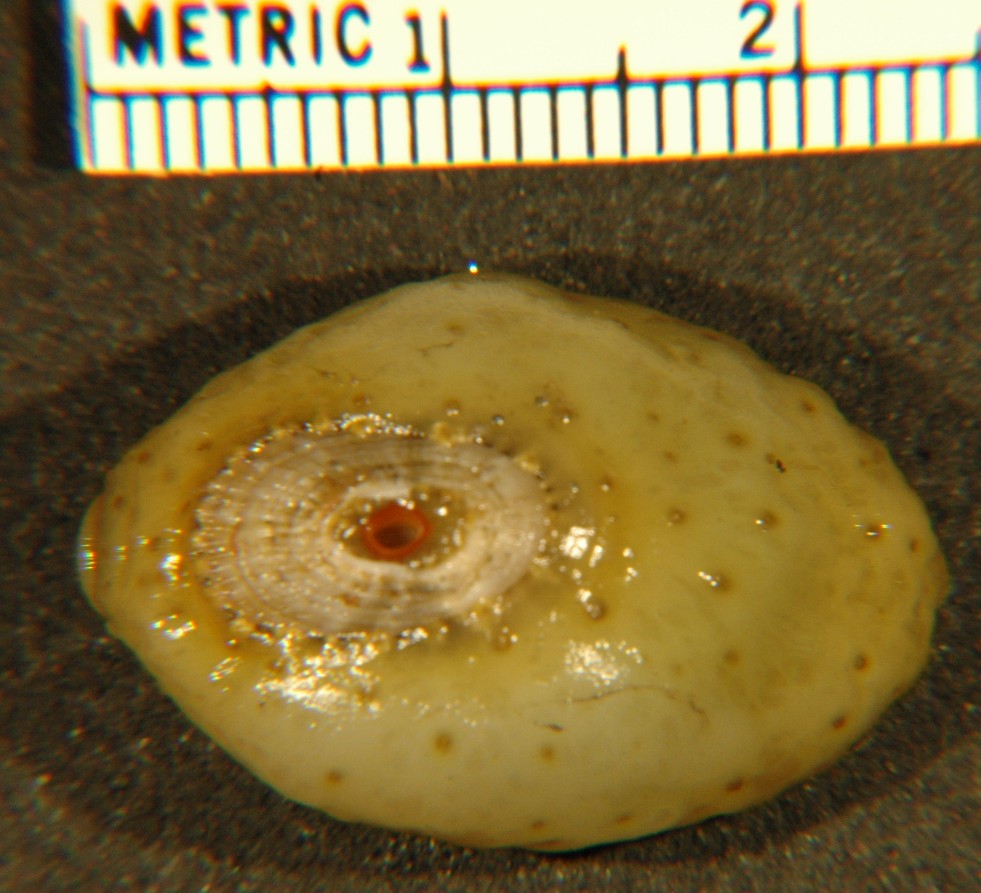How to Distinguish from Similar Species: I know of no similar species in this area. Other keyhole limpets here do not have a shell which is so small in comparison to the body, nor is the aperture equal to about a third of the shell length. Be careful not to mistake it as a dorid nudibranch (the apex looks much like the anus and gills of a dorid but is surrounded by a small, mostly hidden shell and is just behind the head instead of on the posterior end of the body as seen in dorids).
Geographical Range: Sitka Alaska to Baja California, especially on the open coast.
Depth Range: Intertidal to shallow subtidal
Habitat: On compound tunicates or sponges under rocks, or on kelp holdfasts.
Biology/Natural
History: This limpet
is uncommon. Seems to feed on sponges and compound tunicates,
and
may also feed on phytoplankton (their stomach contains a crystalline
style,
which is characteristic of plankton feeders such as bivalves). May be
common
in patches on breakwaters formed of boulders. Predators
include harlequin
ducks. The individual pictured above had a mass of yellowish
eggs
inside.
| Return to: | |||
| Main Page | Alphabetic Index | Systematic Index | Glossary |
References:
Dichotomous Keys:General References:
Harbo,
1997
Kozloff,
1993 (as Megatebennus bimaculatus)
McConnaughey
and McConnaughey, 1985 (as Megatebennus bimaculatus)
Morris
et al., 1980 (as Megatebennus bimaculatus)
Morris,
1966 (As Megatebennus bimaculatus)
O'Clair
and O'Clair, 1998
Scientific
Articles:
Web sites:
General Notes and Observations: Locations, abundances, unusual behaviors:
I have rarely seen this keyhole limpet.

This closeup of the aperture in a living individual shows the
anus
and papillae
which could look like retracted gills inside the opening.
The anterior end of the animal is to the left.
In this view the mantle
has been almost completely retracted from covering the shell.

Here is the same shell, dissected out of the
animal. Anterior
is to the left. There is not an obvious groove around the
margin
of this shell but there are a series of
small concentric grooves, including on the margin.
The anterior
and posterior ends of this shell do not turn up but slope down less
steeply
than elsewhere on the shell.

This view of the mouth (left) and foot
of the animal show that the
mouth and head looks more like that of a typical limpet than of a
nudibranch.
Authors and Editors of Page:
Dave Cowles (2007): Created original page
Jonathan Cowles (2007): Updated page with CSS
